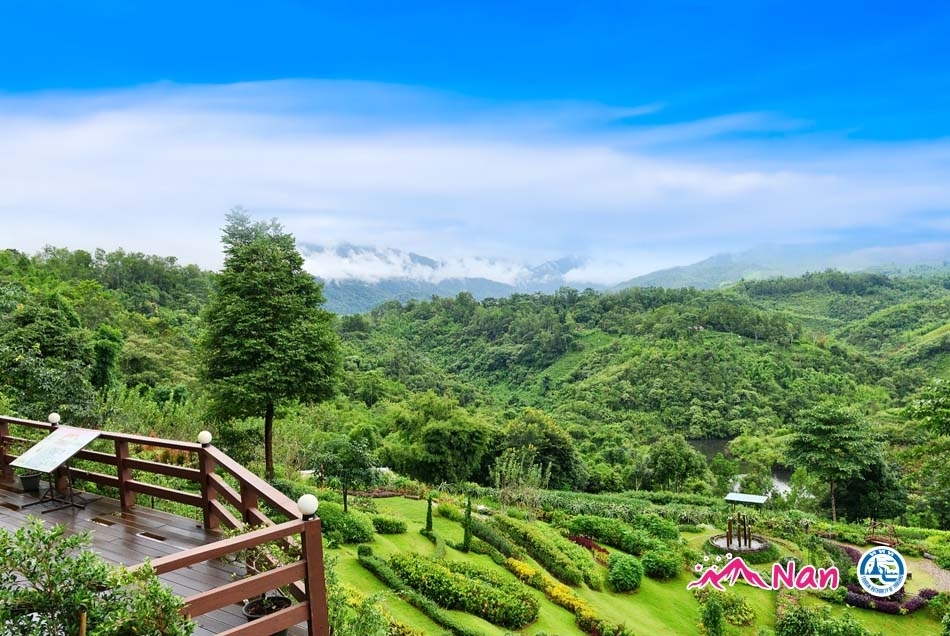
Nan is a province in the North of Thailand. There are many diverse groups living in the area such as the local Thai Yuan, Thai Lue, Thai Puan, Thai Khoen, and Thai Yai. This is why there are so many languages in Nan, which is another charm of Thailand culture.
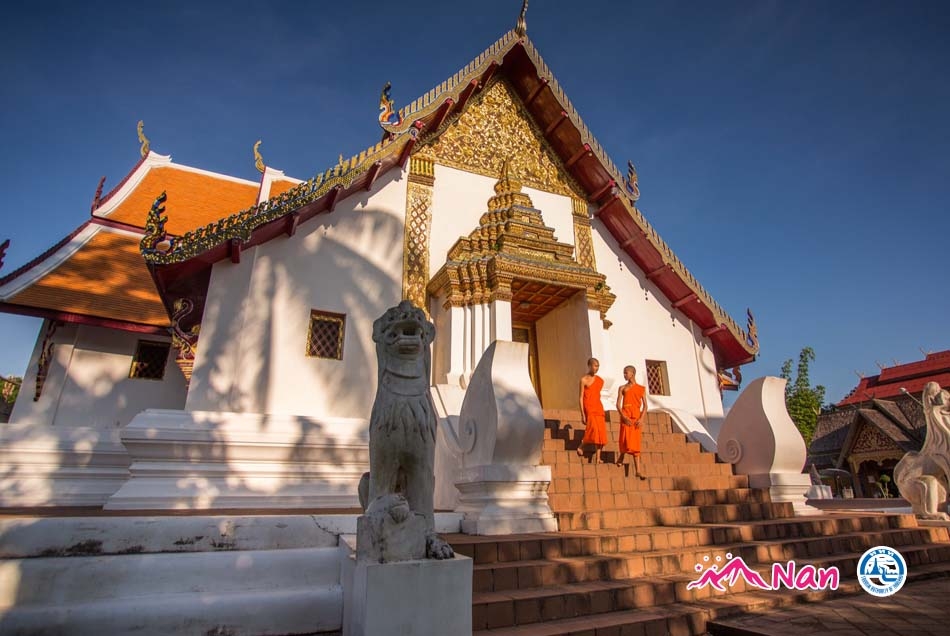
Wat Phumin is a royal temple, located within the compound of the old city called Tambon Nai Wiang at present. It is next to the Nan National Museum. In accordance with the Nan Chronicle, Phrachao Chettabut Phrommin, a Nan ruler, constructed the temple after he had governed Nan for 6 years in 1596. It appears in the Northern Scripture that the temple was originally called “Wat Phrommin” but later became “Wat Phumin”.
The distinguishing point of this temple is its 4-portico building, the only one in Thailand which seems to be standing on the back of 2 Nagas. This building serves as the 3-in-1 ubosot, wihan and the main chedi. The east-west axis is a wihan, while the north-south one is the ubosot.
The Pu Man – Ya Man Painting is honoured as the most beautiful one at Wat Phumin. There is a usage of large pools of red, blue, black, and dark brown colours similar to contemporary paintings. The Lifestyle of the Nan people depicts a woman weaving with a local loom
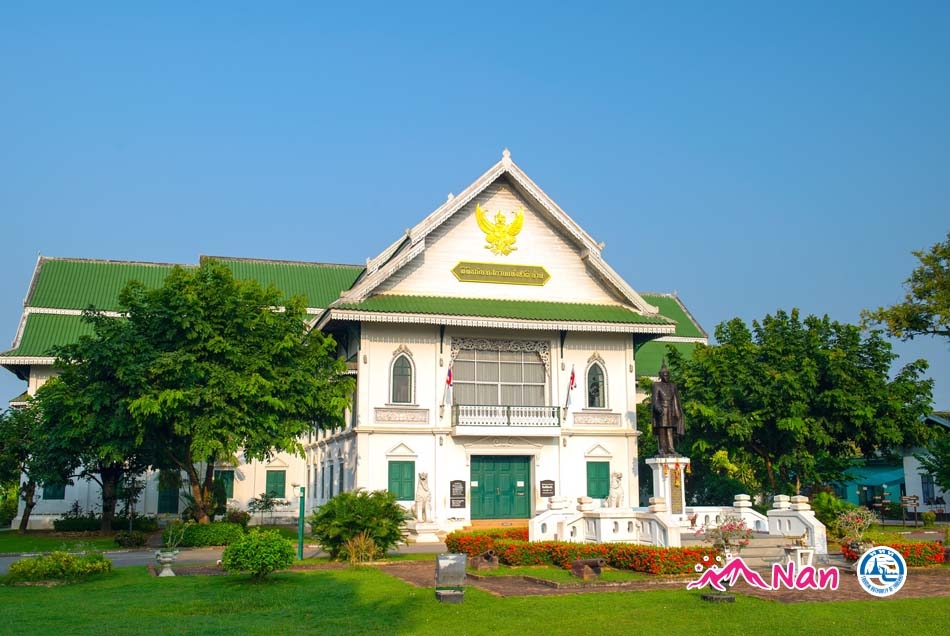
Nan National Museum is on Phakong Road, opposite Wat Phrathat Chang Kham, near Wat Phumin. It is a European style building which came to Thailand during the reign of King Rama V combining with the local architecture of Nan. It was originally “Ho Kham”, a palace and throne hall of Phrachao Suriyaphong Pharitdet, the last Feudal Lord of Nan. It was constructed in 1932 for the first city hall of Nan. Then, in 1974, the building was renovated into the Nan National Museum.
Natural light is used in the museum making the building well ventilated with windows on every side. Visitors will feel like walking at home rather than at the museum, creating pleasure during the visit and watching the display. The museum is divided into 2 floors. The lower one presents the lifestyles of various tribes in Nan, including major traditions and festivals such as the life extending ceremony, boat races, while the upper one displays the artefacts of various periods discovered in Nan since the pre-historic time until the period of the Nan rulers. The important piece is the black elephant tusk, the sacred and valuable object of Nan. It is the left-side one with a length of 94 centimetres.The museum is open daily from 9.00 a.m. – 4.00 p.m. The entrance fee is 100 Baht. For further information, please contact Tel. 0 5471 0561, 0 5477 2777
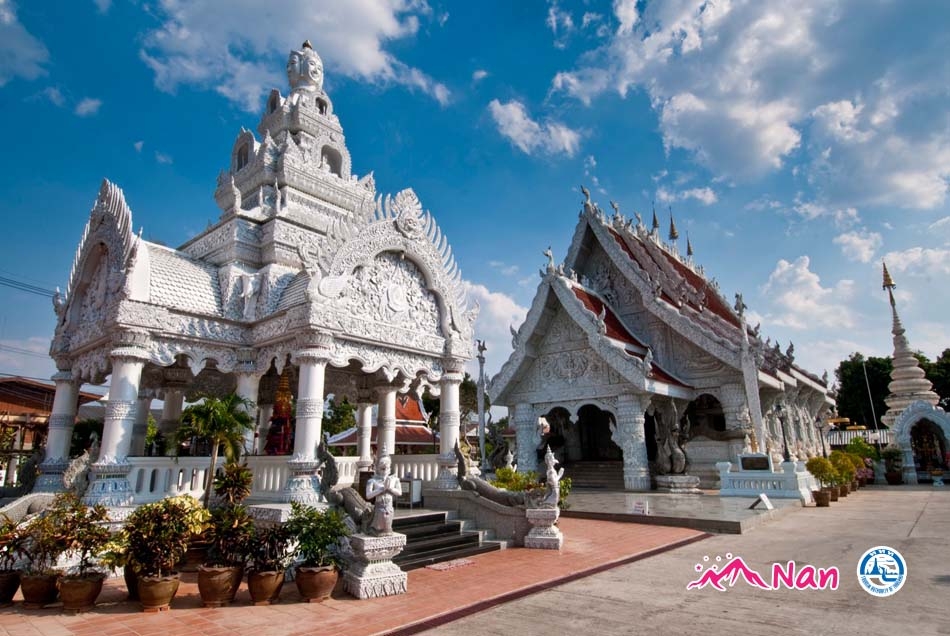
Wat Ming Mueang is on Suriyaphong Road. It was constructed in 1857. Its distinguishing point is the stucco reliefs on the outer wall of the ubosot, presenting the skill of the Chiang Saen craftsmen. The patterns are very exquisite. Within the ubosot are mural paintings depicting the lifestyles of the Nan people by present-day local craftsmen. Moreover, within the compound of the temple stands the city pillar in a cruciform-plan pavilion at its front. The city pillar is 3 metres high. Its base is decorated with engraved and gilded wooden design. The top of the pillar was engraved into 4 faces of the Brahma God, representing Phrom Wihan (Brahmavihara 4) – the four sublime states of mind; namely, Metta - kindness, Karuna - compassion, Mudita – sympathy, and Upekkha - equanimity.
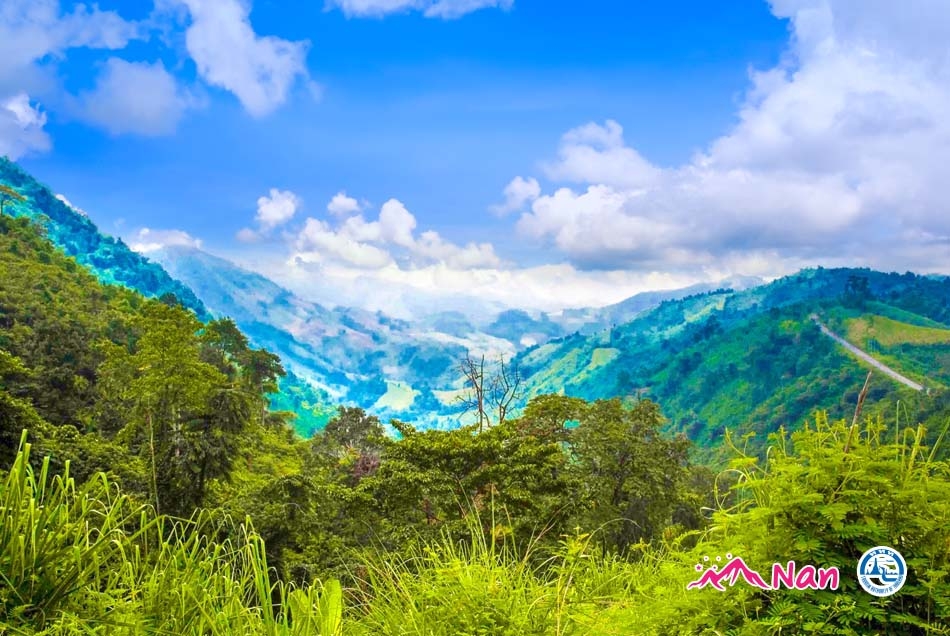
Doi Phu Kha National Park covers a total area of 1,065,000 rai or approximately 1,704 square kilometres of the 8 districts in Nan province; namely, Amphoe Chaloem Phra Kiat, Amphoe Tha Wang Pha, Amphoe Pua, Amphoe Chiang Klang, Amphoe Thung Chang, Amphoe Bo Kluea, Amphoe Santi Suk, and Amphoe Mae Charim. The Doi Phu Kha National Park comprises abundant forest, perfect in both plants and wildlife which are significant to the ecosystem. The mountains of Doi Phu Kha are high, complex, and undulating. They are a part of the end of the Himalaya. Phu Kha summit is the highest in Nan, with a height of 1,980 metres above sea level. Doi Phu Kha National Park comprises 6 varieties of forests; namely, hill evergreen forest, dried evergreen forest, mixed deciduous forest, deciduous dipterocarp forest, natural pine forest, and savanna. It is a habitat of rare and endangered plants and the endemic ones such as Chomphu Phu Kha (Bretschneidera sinensis Hemsl.) which are rarely found in Thailand. It is only found in this national park. It is a big tree with a height of 25 metres. It blooms during January – early March.
Reserve at the Accommodation Section, National Park Division, Department of National Parks, Wildlife and Flora, Bangkok. Contact Tel. 0 5462 6770
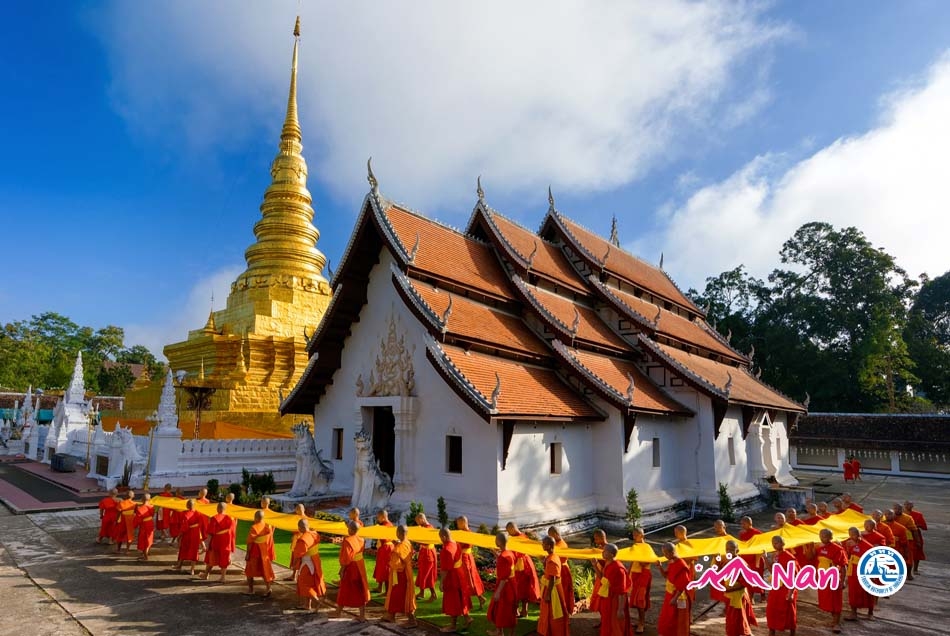
Wat Phrathat Chae Haeng is a sacred place of worship, situated on a mound on the eastern side of the Nan River, at the former centre of the Nan town after moving from Pua town. Wat Phra Borommathat Chae Haeng was constructed during the rule of Chao Phraya Kanmueang (the Feudal Lord of Nan during 1326 – 1359) as an enshrining venue of 7 Buddha relics, silver and golden votive tablets presented by King Maha Thammaracha Lithai. The pattern of Phrathat Chae Haeng is assumed to have been influenced by the chedi of Phrathat Hariphunchai. It is plated with Thong Changko or Thong Dok Buap – a combination of brass and copper. The staircase up to the Phrathat is in a Naga shape, while the gable above the entrance gate to the wihan is the stucco relief depicting intertwined Nagas, the unique characteristic of Nan fine art.